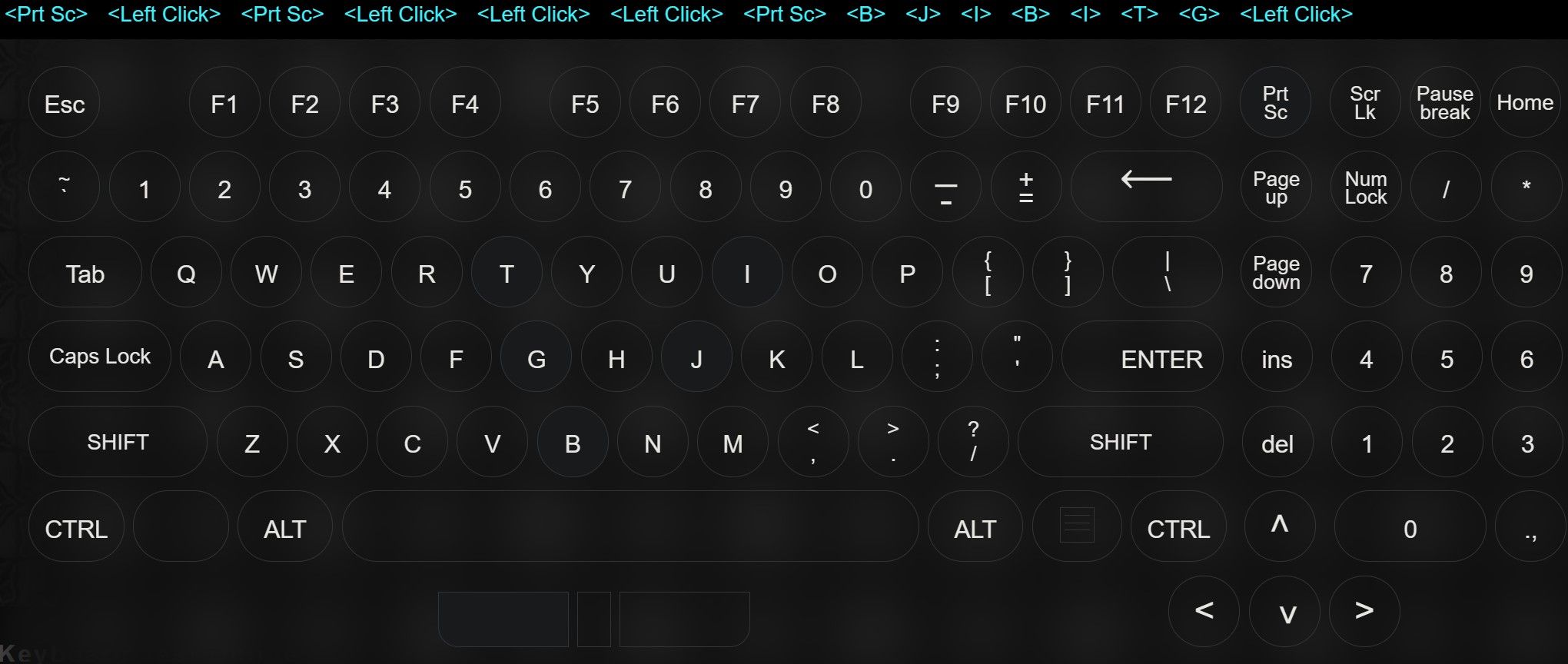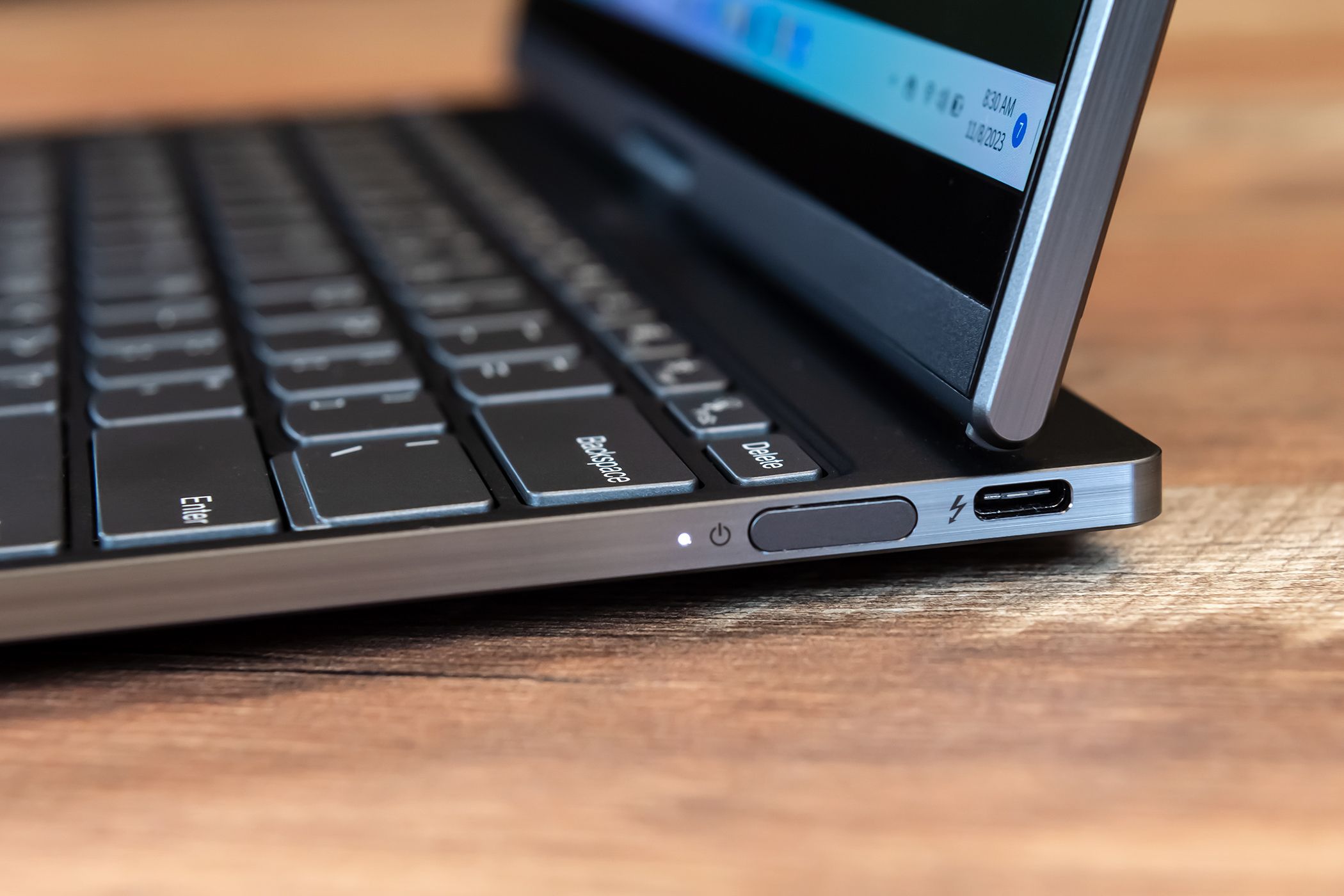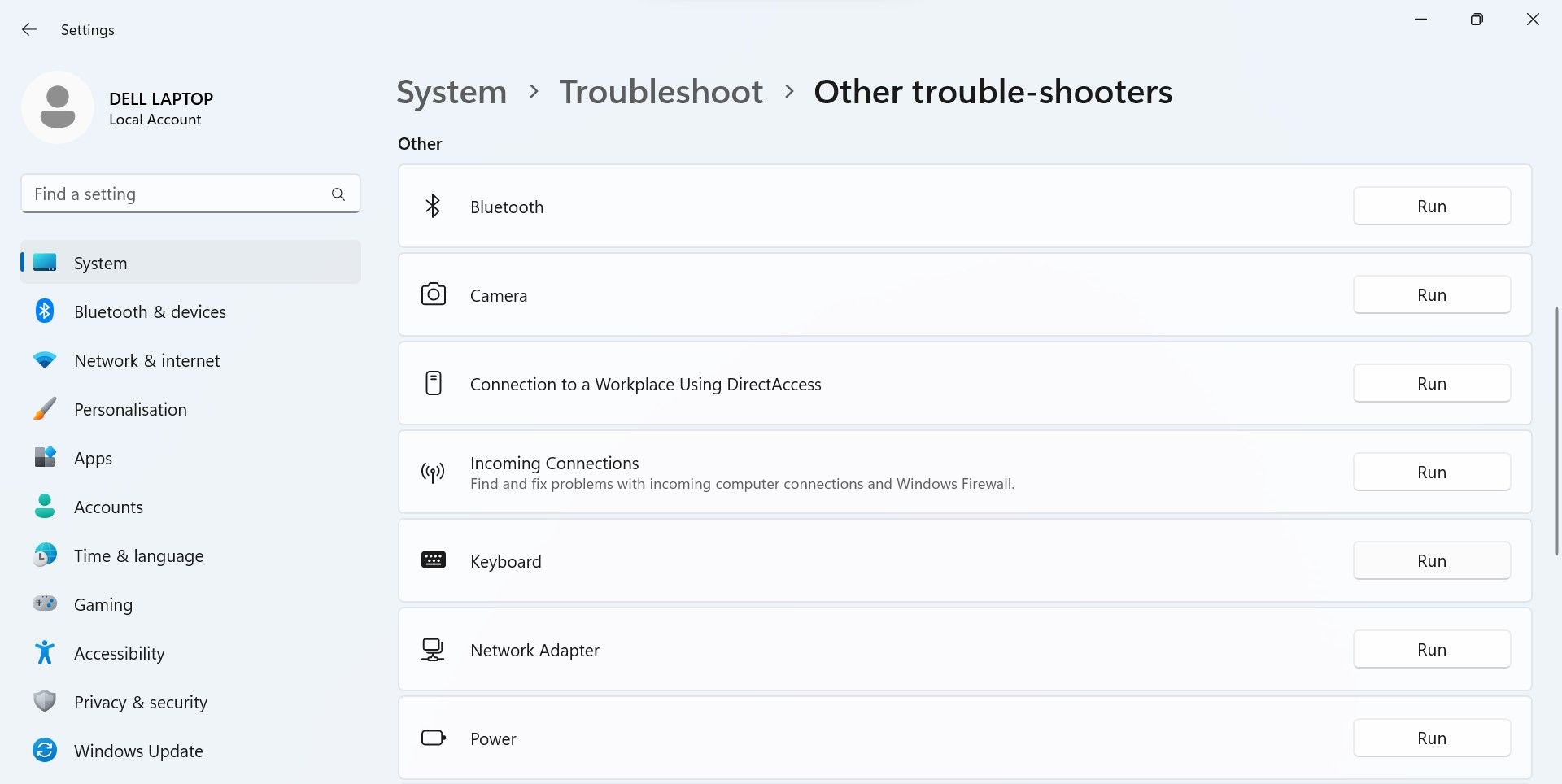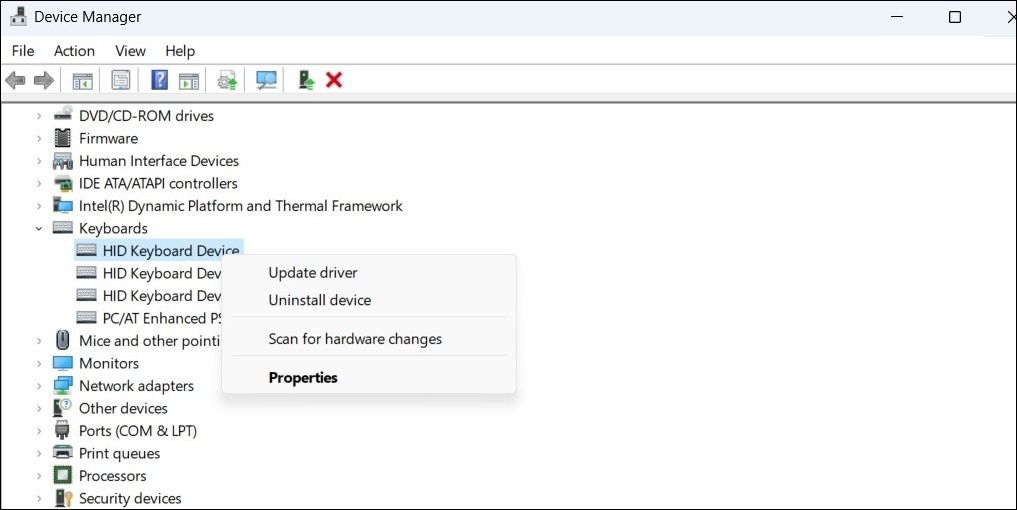If your keyboard keys stop working, it doesn’t necessarily mean they’re broken or need replacement. From checking keyboard settings and running the troubleshooter to updating drivers, there are several things you can try to fix broken keyboard keys.
Are You Signed In to Your Computer?
If you are already logged in to your account on your computer, you can skip this step. However, if you are stuck at the login screen because some of the keys on your keyboard aren’t working, you can use Windows’ on-screen keyboard to log in.

- On the login screen, click the Accessibility option in the bottom right corner.
- Turn on the toggle next to On-screen keyboard. It will open up the on-screen keyboard.
- Enter your password using the on-screen keyboard and press Enter.
After logging into your computer, start applying the following fixes.
1. Make Sure the Keys Aren’t Damaged
It’s almost impossible for several keys on your keyboard to malfunction simultaneously. However, if you recently dropped your keyboard, hit it with something, or spilled a liquid on it, some keys may have been damaged.
To determine if the keys are functioning correctly, go to Keyboard Test, press the keys that are not responding, and check if they register successfully during the test. If the keys don’t register, then they may have become defective. So, have your external keyboard or laptop inspected by a technician.

However, if the keys register successfully during the test, either software interference or Windows settings may be preventing the keys from working correctly. In that case, continue with the remaining fixes.
2. Apply Some Preliminary Checks
Before moving on to in-depth troubleshooting, carry out the following preliminary checks:
- If you are experiencing this issue with an external keyboard, unplug it and plug it back in again.
- Make sure nothing is stuck in the keyboard keys.
- If some keys on your laptop keyboard are not working, restart your device.
- If your device has a keyboard manager app running, shut it down or, if possible, temporarily delete it.
- If your keyboard keys have dust on them, wipe them off with a dry cloth.
- A malware infection, such as a keylogger, can also cause your keyboard keys to malfunction. To ensure that your device is malware-free, run a malware scan with Microsoft Defender.
If the above fixes do not work, start applying the remaining fixes.
3. Perform a Hard Reset

Temporary issues with the Windows OS can sometimes prevent it from registering your keyboard input correctly. To rule out this possibility, you can try performing a hard reset.
- Shut down your laptop or PC.
- Unplug all accessories, including the power cable, then press and hold the power button for at least 60 seconds.
- Plug the power cord back in and turn your computer on.
Once your computer turns back on, check if the keys are working.
4. Is a Certain Set of Keys Not Working on Your Laptop?
Laptop keys are broadly divided into five main types: alphanumeric keys, control keys, function keys, navigation keys, and numeric keypad keys. Some modern keyboards also come with special keys, such as multimedia keys.
If a certain set of keys isn’t working on your keyboard, either those keys are disabled or misconfigured keyboard settings disrupt their operation. So, you should seek solutions specific to those keys. There are ways to fix your keyboard function keys and a few different options to fix broken media keys. Oh, and you can fix a broken Numpad, too.
5. Run the Keyboard Troubleshooter
Both Windows 10 and 11 include a keyboard troubleshooter designed to diagnose and fix common keyboard problems. In most cases, running this troubleshooter fixes most keyboard problems without the need for further action.

- Press Win + I to open the Settings app.
- Select the System tab from the left sidebar.
- Navigate to Troubleshoot > Additional troubleshooters.
- Click on the Run button next to the Keyboard troubleshooter.
Then, follow the on-screen instructions if you are prompted to follow them. Most likely, the troubleshooter will make the changes automatically. If not, the troubleshooter will suggest a few changes for you.
6. Update or Reinstall the Keyboard Drivers
Outdated or corrupt drivers can cause unforeseen problems with computer peripherals. So, if you have not updated your keyboard drivers in a long time, this is a good time to do so. Follow these steps to update the keyboard drivers:

- Right-click on the Windows Start button and open Device Manager.
- Expand the Keyboards category.
- Right-click on the keyboard driver you want to update and click Update.
If updating the keyboard driver does not make any difference, you can try reinstalling it. To do that, right-click the keyboard driver in Device Manager and select Uninstall device. Then, click OK in the confirmation popup. After that, restart your device, and Windows will automatically reinstall the drivers.
7. Change the Keyboard Settings
If you’ve recently made changes to your keyboard settings and started experiencing issues with your keys, it’s possible that those changes caused the problem. If you remember the adjustments you made, try reverting them. If you haven’t made any changes recently or are unsure about what was modified, follow these steps:
- Press Win + I to open the Settingsapp and head to Accessibility > Keyboard.
- Disable the toggles next to Sticky keys, Filter keys, and Toggle keys.
- Disable the toggle next to Underline access keys.
- Scroll down and click Typing under Related settings.
- Turn off the toggles next to Show text suggestions when typing on the physical keyboard and Multilingual text suggestions.
- After that, click on Advanced keyboard settings and make sure the correct language option is selected.
8. Boot Windows Into Safe Mode
If nothing else works, you can try booting your Windows PC into safe mode. If your keys work fine in safe mode, it’s likely that a third-party program, process, or batch file is causing the issue.
You can perform a system restore if the problem started recently. Alternatively, you can try factory resetting your Windows computer to fix the underlying issue.
Dealing with malfunctioning keyboard keys can be frustrating, but with the solutions listed above, you should be able to get your keyboard working again in no time. If not, it might be time to consult a professional or consider replacing your keyboard.







